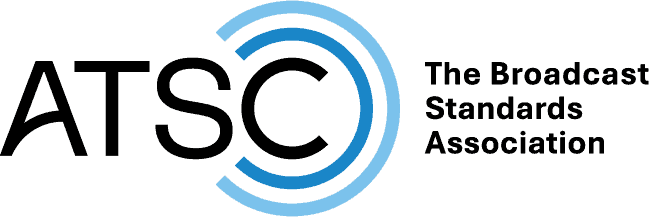- About
- Members
- Sponsors
- Subcommittees
- Technical Documents
- News
- Events
- Spotlight ATSC 3.0
- Contact Us
- Member Login
- Member Meetings
- Advanced Search
Search Site
Member Links
- About
- Members
- Sponsors
- Subcommittees
- Technical Documents
- News
- Events
- Spotlight ATSC 3.0
- Contact Us
- Member Login
- Member Meetings
- Advanced Search
ATSC Bulletin : Recent ATSC 3.0 Developments Underscore Both Progress and Growing Pains
Posted on October 22, 2023 in ATSC News

Headlines and predictions about ATSC 3.0 may be raising questions with our membership this week about what is happening with deployment of the standard and support for NEXTGEN TV across the growing ecosystem of consumer devices in the U.S. As President of ATSC, I thought it was important to share my viewpoint and to put recent developments into context.
This week, many saw media reports about a recent brief FCC filing from LG Electronics (which I would encourage you to read) and a patent dispute with a company that is claiming its technology is being infringed. As a result, LG has told the FCC that it intends to suspend inclusion of ATSC 3.0 electronics in its 2024 U.S. market TV product line.
Regarding the patent situation, our members know that the work of the Advanced Television Systems Committee is a collaborative effort, with hundreds of volunteers representing many varied interests working to develop standards for broadcasting. In the process of setting standards, participants in our process are required to adhere to all ATSC policies – including its patent policy.
Typically, technology owners work together to develop licensing programs that offer access to inventions that benefit the public and they also encourage the broad deployment of equipment that operates within the standardized system.
While ATSC cannot comment on the specifics of the LG case, we trust that all parties involved are actively pursuing solutions to bring the benefits of next-generation broadcasting on future LG television models to U.S. audiences. The impact of this patent situation is likely very limited, according to one prominent electronics industry market analyst.
Broadcasters in the New York City market are pushing ahead with plans to launch the first of two Host Stations in middle October, first, from public broadcaster WNET followed by Nexstar’s WPIX in December. This is excellent news, and a great way to kick off the upcoming NAB Show New York. The launch of service in New York will push NEXTGEN TV service to over 70% of U.S. audiences – a remarkable milestone for a voluntary transition. Other ATSC 3.0 U.S. market transitions are on the drawing board, even as additional transmitters are planned for some markets that already have a single Host Station.
The first of the set-top receivers to carry the NEXTGEN TV mark, and feature verified security, recently shipped to pre-order customers. (I got mine!) More are on the way. At least two more upgrade accessories are in development and plan to ship this year, giving consumers a variety of affordable devices that will work seamlessly with the broadcast service now on-the-air. The consumer technology industry itself is on course to have shipped a cumulative 10,000,000 ATSC 3.0 receivers in the U.S. by the end of this year. Again, that’s remarkable for a voluntary launch – far faster than any other technology deployment I can recall.
Many companies have already linked arms to develop the ATSC 3.0 standard, establish content security, launch next-generation broadcasting reaching most of the U.S. and South Korea plus major cities in Jamaica, bring to retail millions of receivers, and now introduce affordable devices for those who choose to upgrade.
The world’s most flexible Internet Protocol-based broadcast standard is on-air in South Korea, Jamaica, and the U.S., with several other countries now planning to implement elements of the standard we’ve developed together.
So, I think that perspective is important. Every technology transition has its challenges. That’s normal. It’s a testament to the value of the technology that our collective efforts have brought ATSC 3.0 so far in such a relatively short period of time. Licensing discussions and arrangements are part of the process. ATSC is optimistic that the latest licensing issue will be resolved.
I hope you share my confidence, and that you’ll continue to help the thousands of people around the globe who are working to deliver a more immersive, impressive, and spectrum-efficient wireless broadcasting service for the benefit of innovators, technology companies, broadcasters, and consumers alike. ATSC 3.0 is a world-class standard built by our members for the benefit of the entire industry and you can be proud to be a part of our community.
My door is always open. Please reach out to me if you have any questions.
–Madeleine Noland, ATSC President
Posted in ATSC News
News Categories
News Archives
Subscribe
Subscribe to The Standard, our monthly newsletter. Learn More
Join ATSC
ATSC is a membership organization with both voting and observer categories. Voting members include corporations, nonprofit organizations, and government entities, and they participate actively in the work of ATSC. Observers are individuals or entities not eligible to be a voting member.
Subscribe to our Newsletter
Subscribe to The Standard, our monthly newsletter, to stay up-to-date with ATSC news and events around the world.
Site Links
Contact Us
Advanced Television Systems Committee, Inc.
1300 I Street NW, Suite 400E
Washington, DC 20005
Do you have questions about ATSC?
About ATSC
The Advanced Television Systems Committee, Inc., is an international, non-profit organization developing voluntary standards and recommended practices for digital terrestrial broadcasting. ATSC member organizations represent the broadcast, broadcast equipment, motion picture, consumer electronics, computer, cable, satellite, and semiconductor industries. ATSC also develops digital terrestrial broadcasting implementation strategies and supports educational activities on ATSC standards.
© 2025 ATSC







































